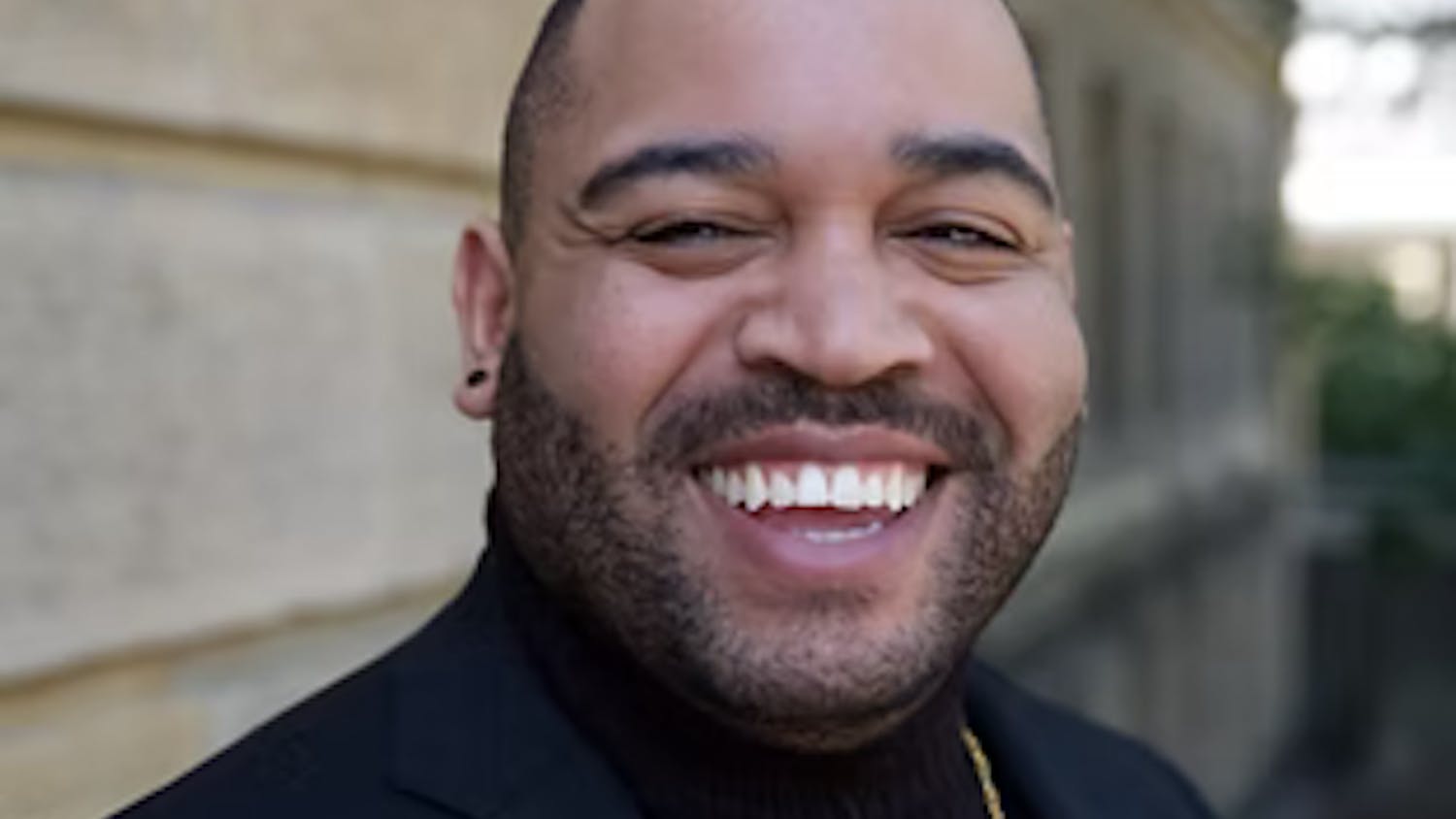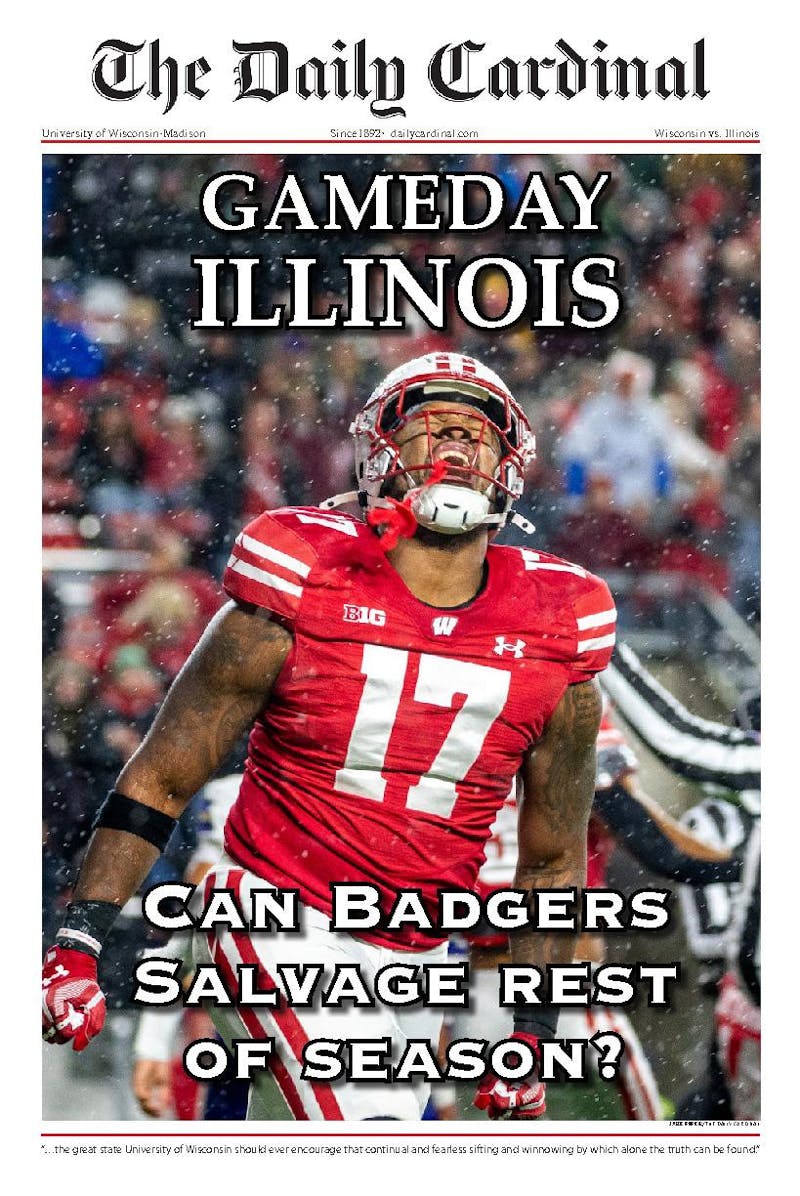Nearly 16 years after UW-Madison came under fire for photoshopping a black student on the 2001-’02 Undergraduate Application’s cover photo that created a facade of diversity, #TheRealUW movement has once again crashed the illusion of a diverse and inclusive campus for all.
In a March 31 video responding to a threatening note slipped under a student’s door, Vice Provost and Chief Diversity Officer Patrick Sims said he wanted to build a foundation that ensures students in the future would never have to experience these threats of violence and level of hate, which he compared to Jim Crow-era racism.
Enough is Enough.... #therealUW https://t.co/lZ79s2vFeI
— cdo@uwmadison (@cdo_uwmadison) March 31, 2016
The previous four Associated Students of Madison Diversity Committee chairs, an office that later changed its name to the Equity & Inclusion Committee, said these incidents of hate and bias on campus are nothing new.
“The reason why I’m not shocked is because a lot of these things did happen at least during my time at UW-Madison,” said 2012-’13 Diversity Committee Chair Mia Akers, which was echoed by Jessica Behling, Dolly
UW-Madison spent $33.3 million on diversity-related program funds and scholarships during the 2013-’14 academic year, according to that year’s UW systemwide Minority & Disadvantaged Students Reporting Form.
Behind all of the expenses, there is the university’s current comprehensive plan for improving campus climate and diversity.
Though it is titled “Forward Together: A Framework for Diversity and Inclusive Excellence,” many involved in the process question how far the university will move forward and doubt they are doing so together.
‘A perfect storm’
In October 2012, then-Provost and Vice Chancellor for Academic Affairs Paul DeLuca charged the University Committee with creating an Ad Hoc Committee that would write a plan aiming to “achieve [the university’s] goals of institutional diversity and a welcoming campus climate,” according to the framework’s introduction.
Ad Hoc Committee Co-Chairs Ryan Adserias, a graduate student, and Ruth Litovsky, a professor, led the group comprised of faculty, students and academic and classified staff members. Adserias and Litovsky helped author the final 53-page framework, which was released May 19, 2014.
The document expanded the definition of diversity and included five main goals: promoting values of diversity; increasing campus coordination; engaging university leadership; improving access and recruitment of underrepresented students, faculty and staff; and strengthening retention.
Litovsky said a lack of resources, leadership
“I’m still not exactly sure what the resources are,” Litovsky said of the framework, nearly two years after it was finalized.
UW-Madison’s two previous 10-year diversity plans—the Madison Plan and Plan 2008—both had quantitative benchmarks and budgets, something that cannot be found in the framework. This is to give different campus groups, colleges or programs the freedom to tailor the recommendations to fit their specific needs, according to Sims.
“It was a strategic choice. It was
Hannah Kinsella, a student representative on the Campus Diversity and Climate Committee in 2014-’15, shared concerns about the downsides of this approach in a Fall 2014 interview.
“In a dream world, yeah, we'd all get in these committees of experts and we'd write what we wanted to have in this perfect land where money wasn't an issue, but that's not the case,” Kinsella said. “And so by creating committees that are going to come up with these I hope great ideas just to be told, 'Oh sorry, we can't do that because we don't have the money,' is like well then maybe you should have
When it comes to engaging with campus leadership, Adserias said there were gaps in communication and coordination during the two-year drafting process. He said the Ad Hoc Committee only met with Chancellor Rebecca Blank once.
“They did not play hardly any role,” Adserias said of university administration, not including Sims, and their involvement in creating the framework.
Adserias went on to say the committee had limited-to-no official communication with relevant offices like the Multicultural Student Center, the LGBT Campus Center and the Dean of Students Office, though he said some of those offices’ representatives did attend community engagement sessions.
“No one wanted to meet with the people who would eventually be holding the bag with implementing things, which was always the Achilles heel of the framework,” Adserias said. “There was an attitude of ‘We don't have the time and resources to meet with everybody who needs to be met with.’”
Additionally, the three most integral administrators who were present for the framework’s inception in 2012—DeLuca, former interim Chancellor David Ward and former Vice Provost and Chief Diversity Officer Damon Williams—are all no longer in their positions at UW-Madison.
“This was a perfect storm of wrong time to do this,” Adserias said. “No one who ultimately should be taking a framework like this on and saying ‘This is my agenda,’ or ‘I am integrating this into my agenda,’ was here, on board or involved.”
Accountability, the final issue Litovsky mentioned, was also prone to extensive disagreement during drafting.
ASM members stressed the significance of making this framework more binding, according to their response to the revised diversity plan a few weeks before it was finalized.
“Given an extended timeline to review this step, ASM would not accept language in favor of optional implementation, for we believe a comprehensive diversity plan needs to make efforts to move
Adserias said the framework had to be edited before it could finally be presented to the Faculty Senate for its approval in May.
“The Faculty Senate, they wanted to insert just like a sentence or two, but basically said all of this was optional, so kind of taking the few teeth that were in it, out,” Adserias said.
After the framework was completed, Gardner said his fears for lack of accountability measures were realized.
“I think it's becoming a guideline,” Gardner said in a November 2014 interview. “Our intent and what we were clear on before we passed it is that this is a plan, this is meant to hold us accountable to these measures, implementation is going to be challenging but it needs to be intentional and needs to be impactful.”
R.E.E.L. issues
After two years of meetings, engagement sessions and negotiations preceding the drafting and approval of the Diversity Framework, the 2014-’15 academic year began with a new task: implementation.
“Affecting R.E.E.L. Change for Diversity & Inclusion” is the implementation plan that began in November 2014 when the Office of the Vice Provost and Chief Diversity Officer created six committees to develop and submit implementation proposals that condense the framework. The acronym stands for Retain, Equip, Engage and Lead, which are based on the five framework goals.
The committees submitted proposals to Sims in late February 2015, which he estimated to contain around 80 initiatives. Only one of these initiatives had a hard budgetary recommendation. Sims then condensed these down to 18 initiatives that would come in three phases.
Sims said this separate implementation plan was necessary to ensure the framework’s goals actually came to fruition, and Adserias agreed.
“Everyone knew the document was pretty abstract and conceptual in nature, so something had to get more granular and specific,” Sims said. “That’s the part that might perhaps be lost on some of the committee members because it was such a departure from the traditional approach, that [the framework] wasn’t a prescriptive document.”

“Aside from the people who had just happened to be appointed to serve on some random committee, there was absolutely no contact between the implementation committees and members of the Ad Hoc,” Adserias said. “Absolutely none. In fact, I didn’t know this was happening until I got an email from somebody who was like, ‘Why are they asking me to be on the framework committee I thought you guys were done with that?’”
Additionally, Adserias was critical of the implementation plan not really addressing difficult goals.
“It really looks like low-hanging fruit to me. There's not a lot of stuff in the implementation plan that is difficult for anyone to do,” Adserias said. “We're really avoiding the actual hard stuff that we need to do, but our rhetoric has always been that we're really forward thinking, we're at the cutting edge.”
Recent budget cuts to UW-Madison impacted the R.E.E.L. Change implementation process. Since no clear budget has been presented to Sims, the committees were charged with examining cost-effective methods, according to CDCC Co-Chair and Sociology Department Chair Pamela Oliver.
“Budget, per se, was never really on the agenda,” Oliver said. “ It was more of a vision of what we’re going to do.”
Due to the cuts, all university offices had to absorb some reduction in funding. The Division of Diversity, Equity & Educational Achievement received a smaller cut compared to other university offices. In the 2015-’16 academic year, the DDEEA took a 3 percent cut, compared to academic units taking a 4 percent cut and administrative units taking a 4.5 percent cut, according to UW-Madison spokesperson Meredith McGlone.
According to Oliver, the cuts still hindered the committees from more fully investigating new initiatives, though.
Sims went on to estimate three-quarters of what was actually in the implementation plan was already in practice.
“We didn’t have a thorough understanding of what the fiscal resource commitment was going to be,” Sims said. “The chancellor did say she is willing to make the commitment but she wasn’t going to commit a dollar amount without seeing what the ideas were, so we’re in a bit of a chicken-and-egg scenario.”
Moving forward?
The framework and its implementation plan are the primary university initiatives aiming to create an inclusive and welcoming campus for all.
Between the dialogue and the documents themselves, campus engagement has been universally acknowledged as vital to the plan’s success.
The 2015-’16 academic year is the first year for implementation, yet current student
“The framework is not reaching students now,” Coker said. “I’m not saying it’s a bad list of goals, it’s just that it’s literally just a list right now and there’s no action to it.”
In April, The Daily Cardinal and All Minds Matter sent a survey to UW-Madison students to judge what they knew about the framework. More than 3,500 students responded.
Nearly 80 percent of respondents said they had never even heard of the Diversity Framework. Students were also asked five true or false questions, with an optional answer of “I don’t know.” Across these five questions, 93 percent of respondents responded with either “I don’t know” or the wrong answer.
A knowledge gap is further evident when examining the existing campus engagement sessions.
Administrators have emphasized the importance of open dialogue, primarily manifesting itself into forums and town hall discussions. However, frustration lingers after several people attending these discussions have expressed feelings of being stuck in a feedback loop, without seeing anything from these discussions materialize.
“We’ve been having these types of conversations with
These conversations are meant to drive the university forward, to engage stakeholders in developing a healthier campus climate for everyone.
There is a consensus among key players—administrators, committee chairs and student leaders—that the goals of the Diversity Framework are what the university should be striving for, but disagreement,
“I don’t think
Ten years from now, would Adserias, one of the authors of the framework, see this plan as a success?
“My 2016 






